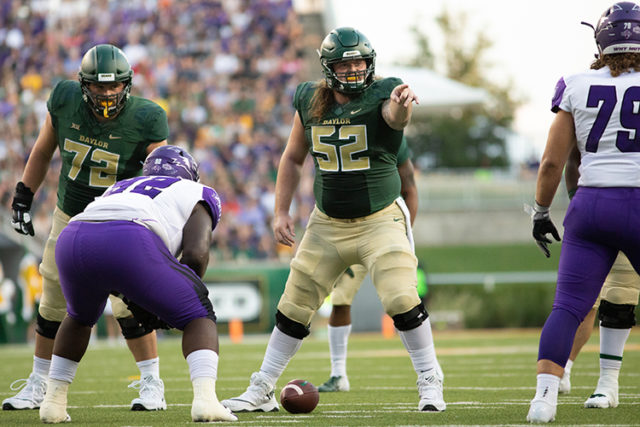By Ben Everett | Sports Editor
The National Football Foundation and College Football Hall of Fame teamed up this year to implement a set of new rules regarding gameplay for college football.
The NFF and hall of fame worked with Rogers Redding, the national coordinator of NCAA’s College Football Officiating, in order to make changes to the way college football is played.
According to the Playing Rules Oversight Panel, Redding and his team were able to propose changes to overall gameplay because it is an even-numbered year. During odd-numbered years, only rules related to player safety can be amended.
Starting this season, if a kickoff receiver makes a fair catch anywhere inside the 20-yard line, his team will get the ball at the 25-yard line.
Redding said kickoffs continue to cause injuries in college football, so any incentive to not return the ball should help make the game safer.
“The kickoff return continues to be the play with the highest risk of head injuries,” Redding wrote. “And there have been a number of rule changes in recent years intended to provide incentives for a team not to return the kickoff.”
Baylor head coach Matt Rhule said the kickoff rule change is good because it adds more strategy to special teams.
“We’ve worked really hard on the new kickoff return/fair catch rule,” Rhule said. “It introduces a whole new dynamic because if you try to fair-catch it, you get the ball at the 25, but if you drop it, you get it right there. There’s some risk-reward in it. We’ve messed around and tried a bunch of different things. That is, I think, a good rule change.”
Sophomore running back John Lovett and freshman wide receiver Tyquan Thornton are the two players who receive kickoffs for the Bears. Lovett said the coaches made sure to inform the players of the rule, but it doesn’t change much.
“[The coaching staff] emphasized it,” Lovett said. “They taught it to us, so we know, but it’s not a huge factor. It doesn’t really matter to me.”
The other major rule change for the 2018 college football season has to do with blocking below the waist. Redding said blocking below the waist has been a difficult penalty to officiate in the past, so they tried to make it simpler.
“The rules about low blocks are sometimes a challenge because they are situational,” Redding wrote. “That is, whether a particular block below the waist is legal depends not only on the block itself, but also on the situation. This year, the rules committee took some steps to try to make the rule not only simpler but, much more importantly, safer.”
Starting this season, linemen who are inside the tackle box can block from the front or the side until the ball leaves the box. Anyone else can block below the waist if the force of the block is at the front. The major change is that any block below the waist five yards or more beyond the line of scrimmage is illegal.
Rhule said the new blocking below the waist rule will be huge because teams have relied on that technique in the past.
“I think it’s going to make a significant difference,” Rhule said. “That’s always sort of been a way out for a lot of guys. We’re not a cut block team, but a lot of other teams are, so I like the rule. It’ll change the way some teams play in terms of having to stay up more and play more hands-on-hands football. That’s kind of the way we’ve always played, so we haven’t really talked about it, but I know other teams are going to have to make some major changes.”
Another change is that the offense can keep the three points and enforce the penalty on the ensuing kickoff if a penalty on the defense occurs during a made field goal, rather than declining the penalty altogether.
Additionally, officials will ask players to leave the game if they do not have their entire knees covered with knee pads.
In order to increase pace of play, the time between a touchdown and the extra point has been shortened, as well as the time between the kickoff return and the first play from scrimmage.



